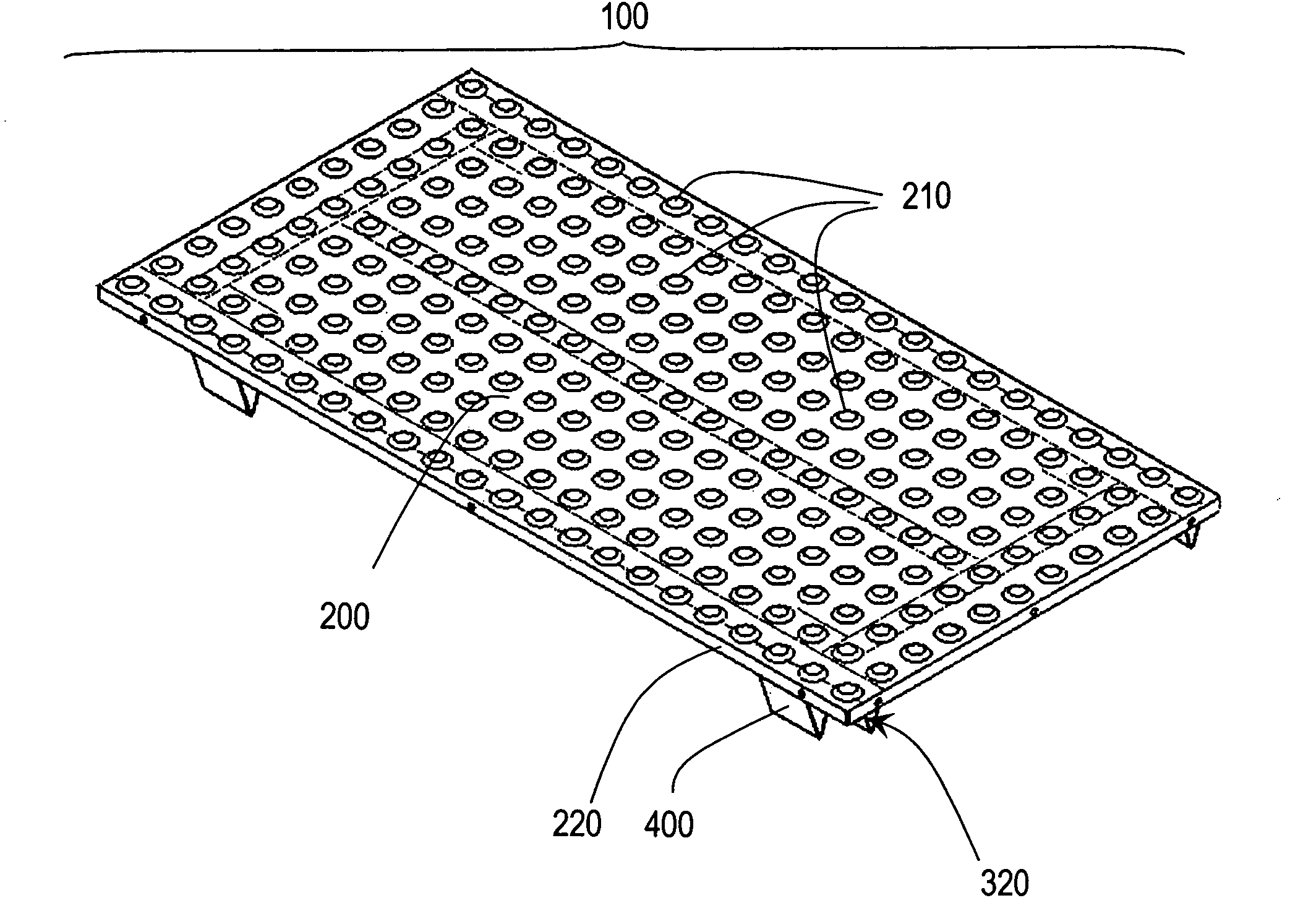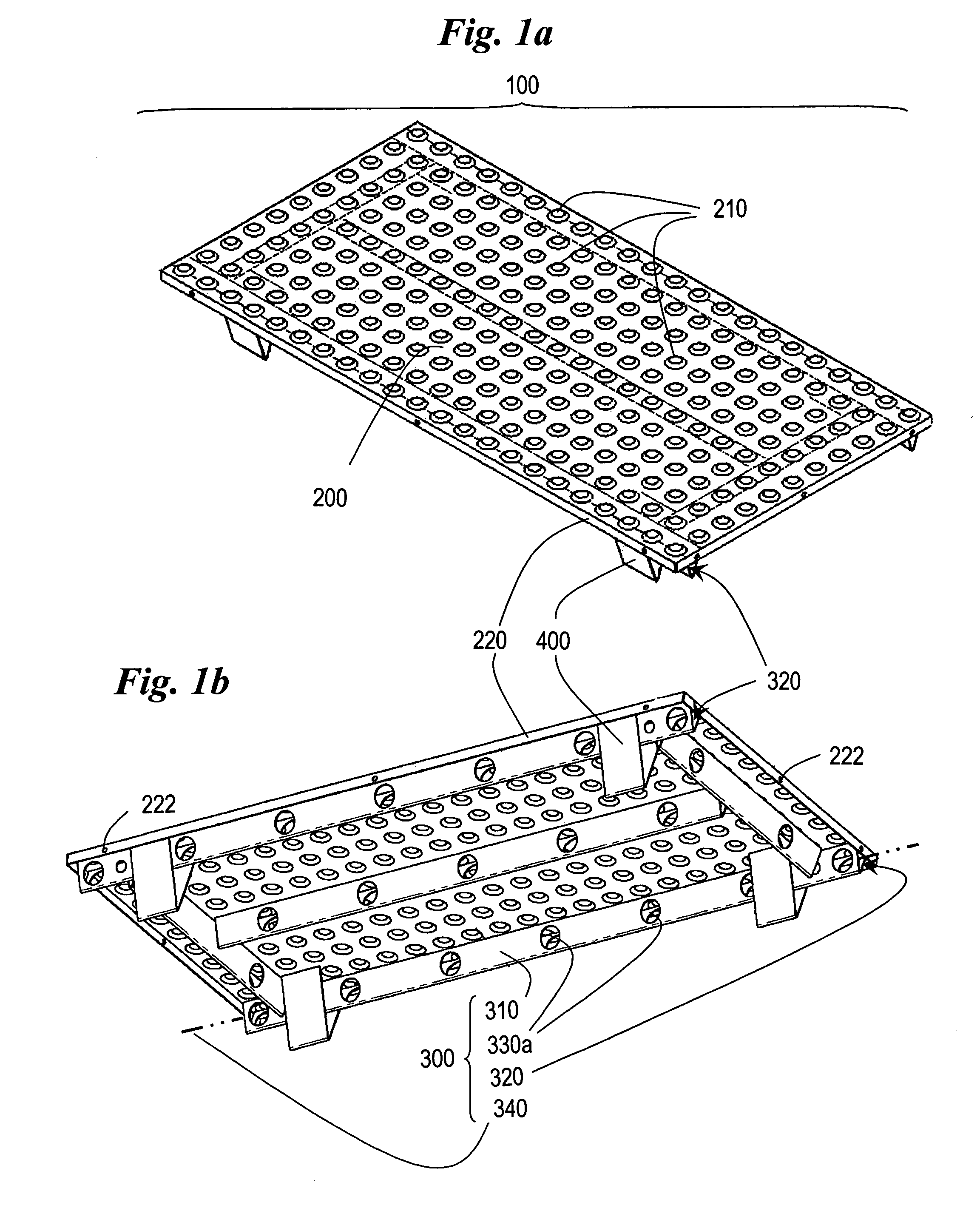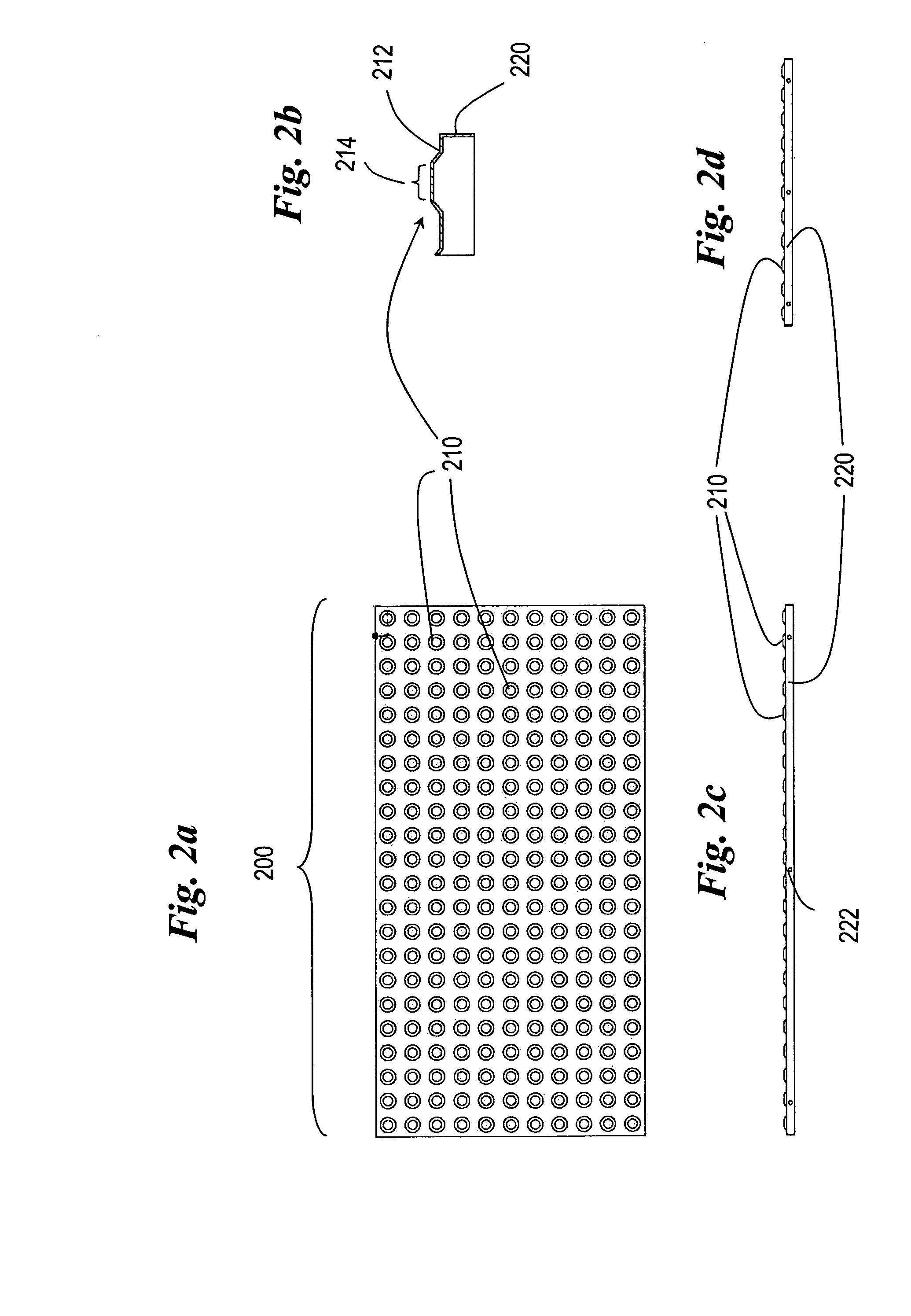Tactile tile with improved reinforced embedment plate
a technology of reinforced embedment and tile, which is applied in the direction of single unit paving, physical therapy, and walkways, etc., can solve the problems of reducing the service life of the dome, so as to minimize the long-term maintenance cost, minimize installation time and cost, and facilitate installation.
- Summary
- Abstract
- Description
- Claims
- Application Information
AI Technical Summary
Benefits of technology
Problems solved by technology
Method used
Image
Examples
Embodiment Construction
[0065]Referring now specifically to the figures, in which identical or similar parts are designated by the same reference numerals throughout, a detailed description of the present invention is given. It should be understood that the following detailed description relates to the best presently known embodiment(s) of the invention. However, the present invention can assume numerous other embodiments, as will become apparent to those skilled in the art, without departing from the appended claims. For example, though the present embedment tile is described relative to embedment in moldable materials such as concrete or asphalt, it may also be embedded in other types of materials. Also, though the tactilely detectable surface of the embedment tile is described as producing a warning pattern compliant with ADA Accessibility Guidelines, any pattern may be produced, including way-finder patterns, purely decorative patterns, emblematic patterns or patterns of other sorts.
[0066]It should als...
PUM
 Login to View More
Login to View More Abstract
Description
Claims
Application Information
 Login to View More
Login to View More - R&D
- Intellectual Property
- Life Sciences
- Materials
- Tech Scout
- Unparalleled Data Quality
- Higher Quality Content
- 60% Fewer Hallucinations
Browse by: Latest US Patents, China's latest patents, Technical Efficacy Thesaurus, Application Domain, Technology Topic, Popular Technical Reports.
© 2025 PatSnap. All rights reserved.Legal|Privacy policy|Modern Slavery Act Transparency Statement|Sitemap|About US| Contact US: help@patsnap.com



